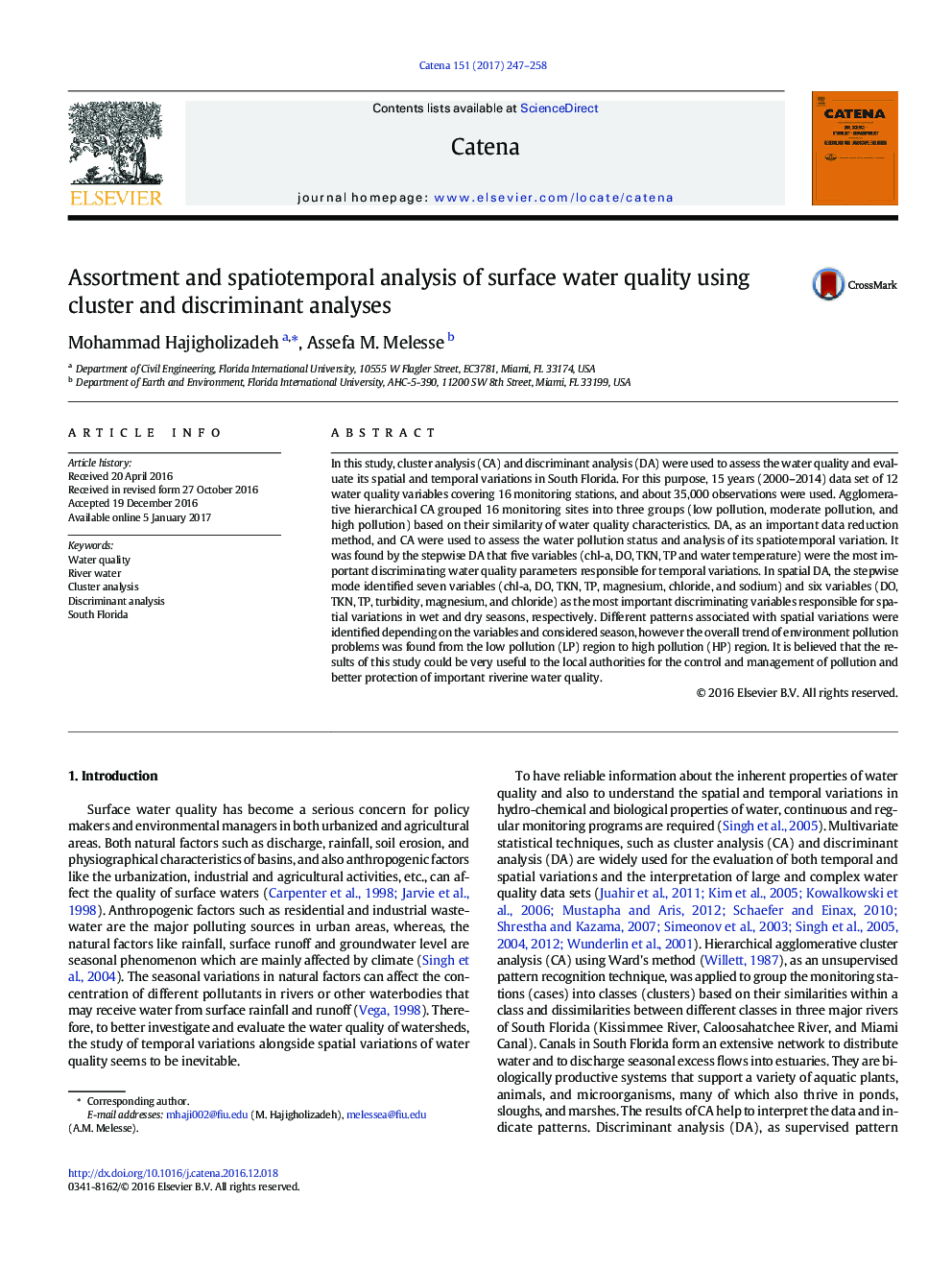| کد مقاله | کد نشریه | سال انتشار | مقاله انگلیسی | نسخه تمام متن |
|---|---|---|---|---|
| 5770190 | 1629203 | 2017 | 12 صفحه PDF | دانلود رایگان |
- Hierarchical cluster analysis grouped 16 monitoring sites into three groups.
- Spatiotemporal variation of water quality studied using the discriminant analysis.
- Discriminating water quality parameters varies for wet and dry seasons.
- Spatial distribution patterns resulting from DA confirmed the accuracy of CA.
In this study, cluster analysis (CA) and discriminant analysis (DA) were used to assess the water quality and evaluate its spatial and temporal variations in South Florida. For this purpose, 15Â years (2000-2014) data set of 12 water quality variables covering 16 monitoring stations, and about 35,000 observations were used. Agglomerative hierarchical CA grouped 16 monitoring sites into three groups (low pollution, moderate pollution, and high pollution) based on their similarity of water quality characteristics. DA, as an important data reduction method, and CA were used to assess the water pollution status and analysis of its spatiotemporal variation. It was found by the stepwise DA that five variables (chl-a, DO, TKN, TP and water temperature) were the most important discriminating water quality parameters responsible for temporal variations. In spatial DA, the stepwise mode identified seven variables (chl-a, DO, TKN, TP, magnesium, chloride, and sodium) and six variables (DO, TKN, TP, turbidity, magnesium, and chloride) as the most important discriminating variables responsible for spatial variations in wet and dry seasons, respectively. Different patterns associated with spatial variations were identified depending on the variables and considered season, however the overall trend of environment pollution problems was found from the low pollution (LP) region to high pollution (HP) region. It is believed that the results of this study could be very useful to the local authorities for the control and management of pollution and better protection of important riverine water quality.
161
Journal: CATENA - Volume 151, April 2017, Pages 247-258
